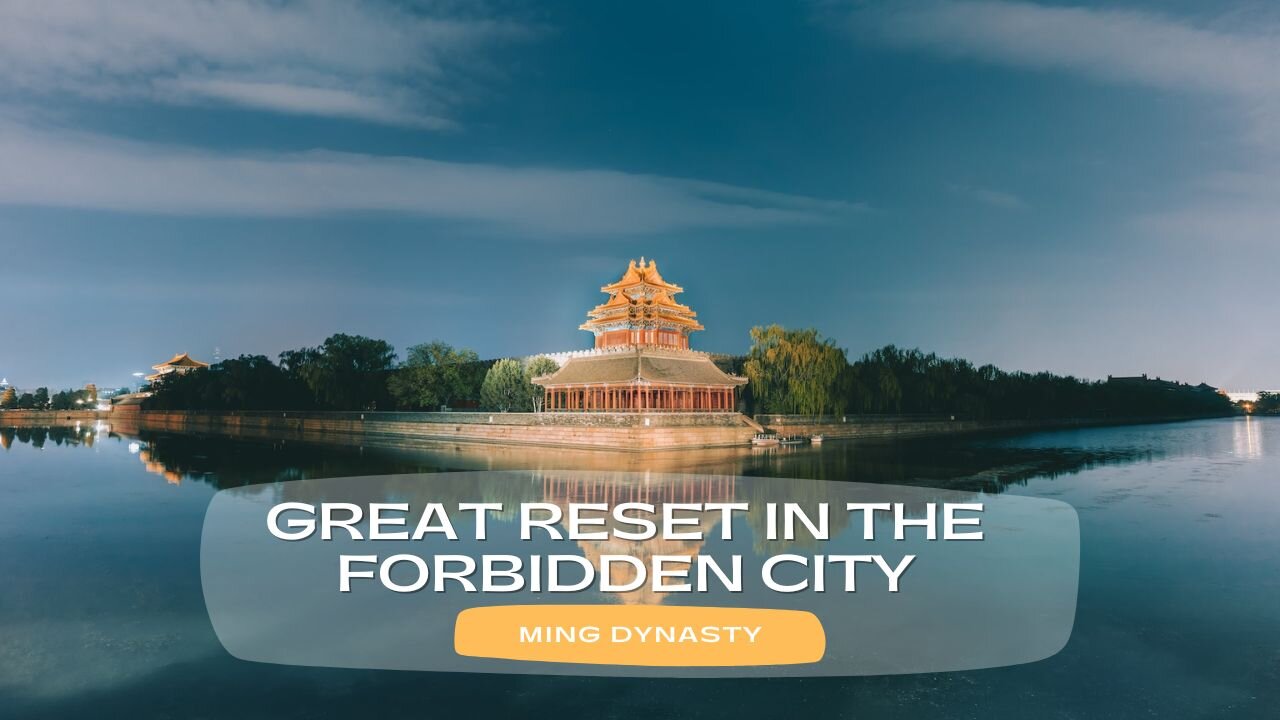Premium Only Content

Destructive Great Reset in The Forbidden City During the Ming Dynasty
Looking into the Ming Dynasty and possible traces of a destructive event
-
The Ming dynasty officially the Great Ming, was an imperial dynasty of China, ruling from 1368 to 1644 following the collapse of the Mongol-led Yuan dynasty. The Ming dynasty was the last imperial dynasty of China ruled by the Han people, the majority ethnic group in China. Although the primary capital of Beijing fell in 1644 to a rebellion led by Li Zicheng (who established the short-lived Shun dynasty), numerous rump regimes ruled by remnants of the Ming imperial family—collectively called the Southern Ming—survived until 1662.
-
The Ming dynasty's founder, the Hongwu Emperor (r. 1368–1398), attempted to create a society of self-sufficient rural communities ordered in a rigid, immobile system that would guarantee and support a permanent class of soldiers for his dynasty; the empire's standing army exceeded one million troops and the navy's dockyards in Nanjing were the largest in the world.
-
He also took great care breaking the power of the court eunuchs and unrelated magnates, investing his many sons throughout China and attempting to guide these princes through the Huang-Ming Zuxun, a set of published dynastic instructions.
-
This failed when his teenage successor, the Jianwen Emperor, attempted to curtail his uncles' power, prompting the Jingnan campaign, an uprising that placed the Prince of Yan upon the throne as the Yongle Emperor in 1402.
-
The rise of new emperors and new factions diminished such extravagances; the capture of the Emperor Yingzong of Ming during the 1449 Tumu Crisis ended them completely. The imperial navy was allowed to fall into disrepair while forced labor constructed the Liaodong palisade and connected and fortified the Great Wall into its modern form.
-
By the 16th century, however, the expansion of European trade – albeit restricted to islands near Guangzhou such as Macau – spread the Columbian Exchange of crops, plants, and animals into China, introducing chili peppers to Sichuan cuisine and highly productive maize and potatoes, which diminished famines and spurred population growth. The growth of Portuguese, Spanish, and Dutch trade created new demand for Chinese products and produced a massive influx of Japanese and American silver.
-
-
 16:25
16:25
The Aquarius Bus
1 year agoSalt Lake City, Utah. 1860. Built or Found? Again, where are the people?
2.14K6 -
 57:26
57:26
X22 Report
2 hours agoMr & Mrs X - The Food Industry Is Trying To Pull A Fast One On RFK Jr (MAHA), This Will Fail - EP 14
47K20 -
 1:06:36
1:06:36
Wendy Bell Radio
5 hours agoPet Talk With The Pet Doc
15.8K18 -
 30:58
30:58
SouthernbelleReacts
2 days ago $3.50 earnedWe Didn’t Expect That Ending… ‘Welcome to Derry’ S1 E1 Reaction
6.26K5 -
 13:51
13:51
True Crime | Unsolved Cases | Mysterious Stories
5 days ago $9.46 earned7 Real Life Heroes Caught on Camera (Remastered Audio)
13.8K1 -
 LIVE
LIVE
Total Horse Channel
11 hours ago2025 IRCHA Derby & Horse Show - November 1st
68 watching -
 4:19
4:19
PistonPop-TV
6 days ago $2.34 earnedThe 4E-FTE: Toyota’s Smallest Turbo Monster
11.2K -
 43:07
43:07
WanderingWithWine
5 days ago $1.29 earned5 Dreamy Italian Houses You Can Own Now! Homes for Sale in Italy
9.84K2 -
 LIVE
LIVE
Spartan
20 hours agoFirst playthrough of First Berserker Khazan
310 watching -
 28:01
28:01
Living Your Wellness Life
2 days agoTrain Your Hormones
12.5K